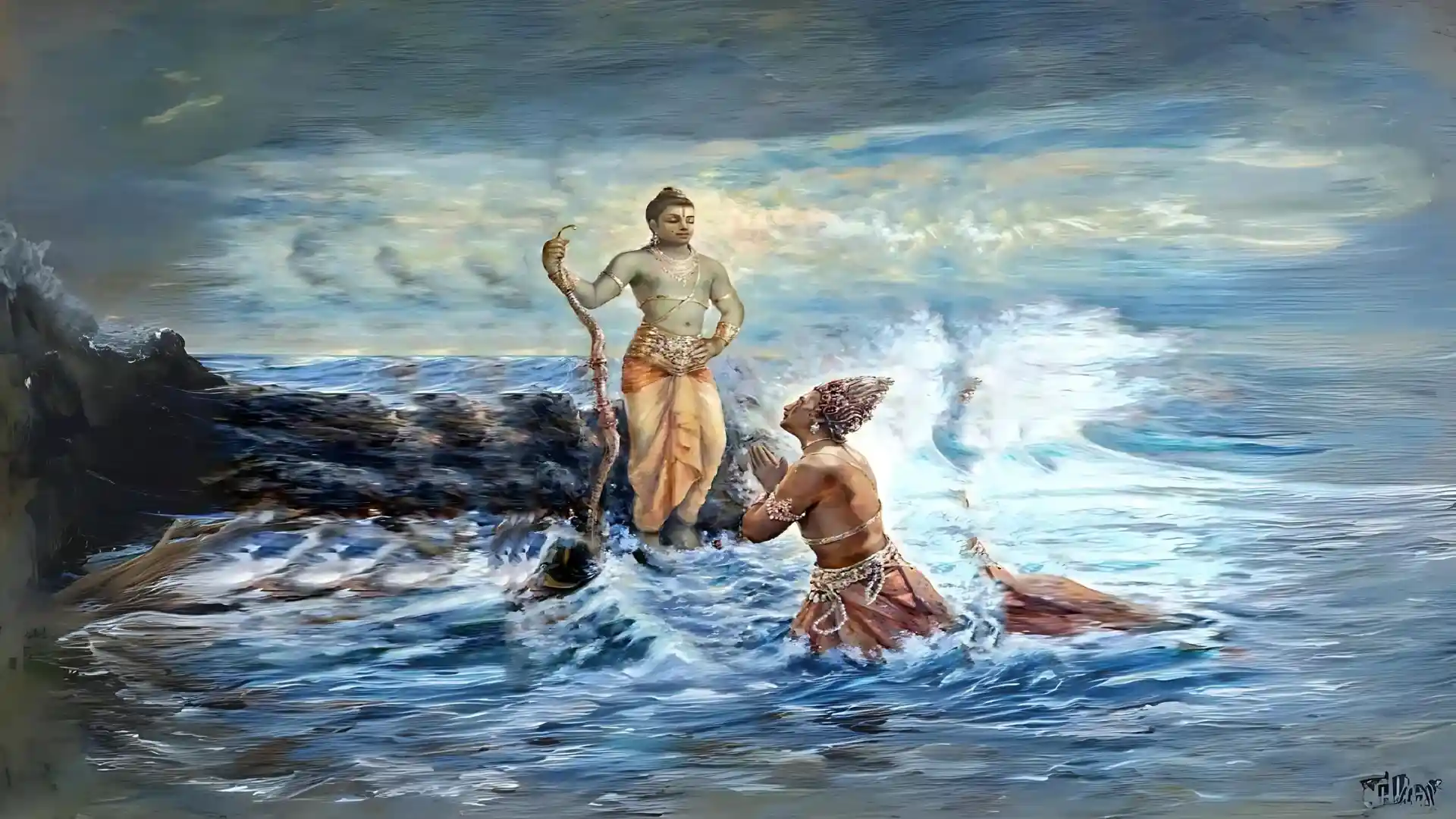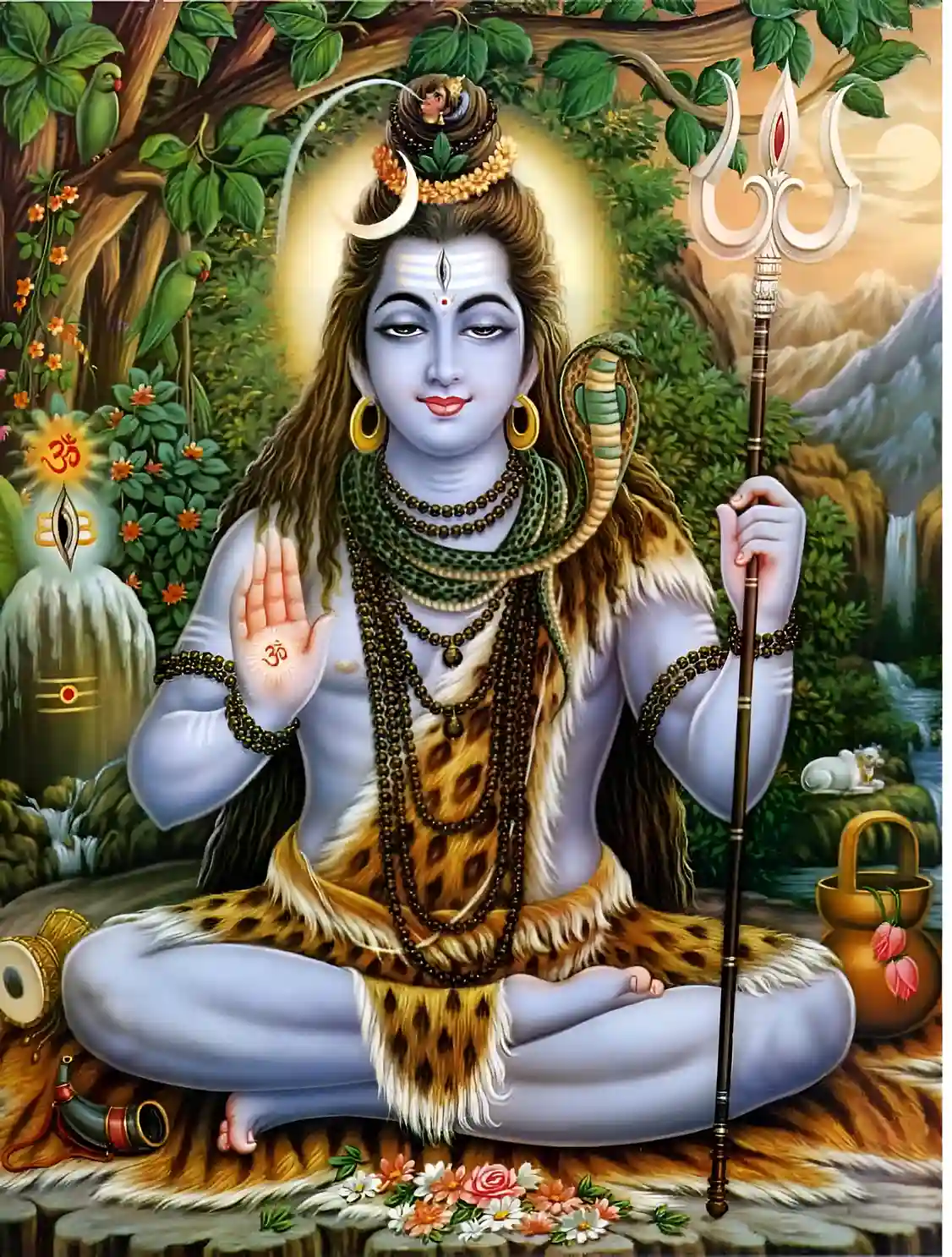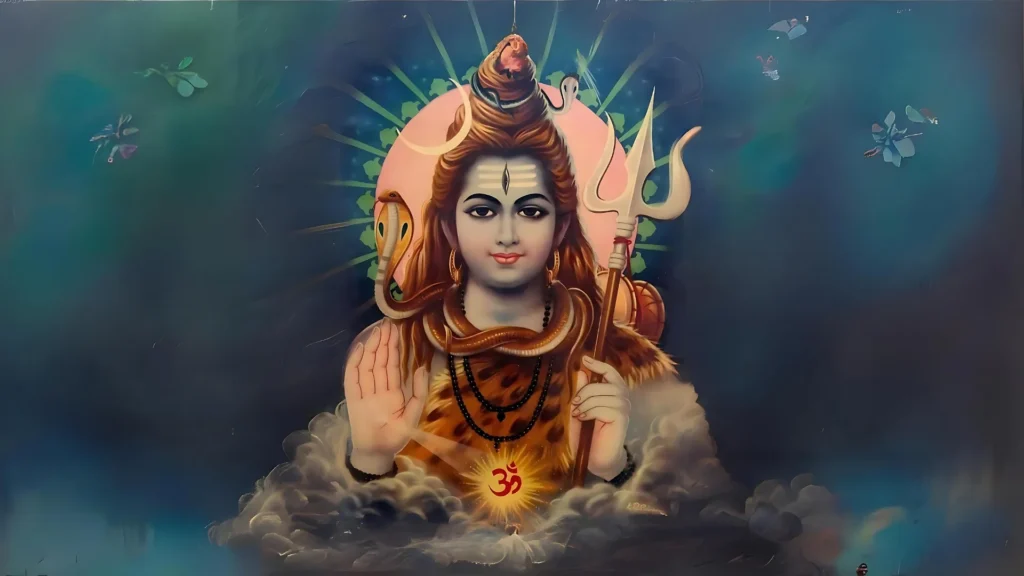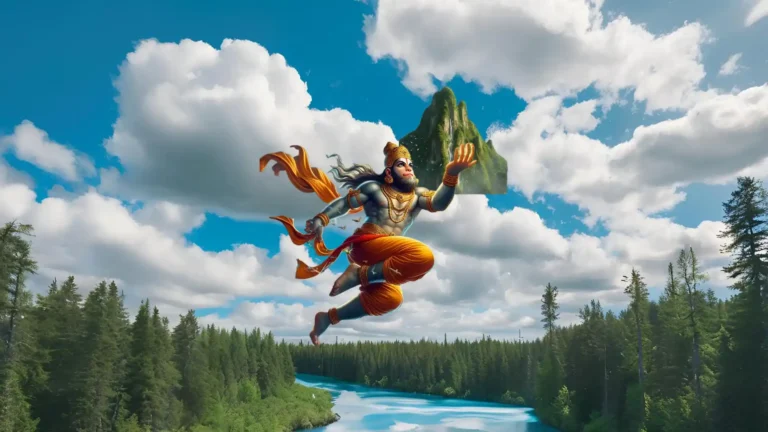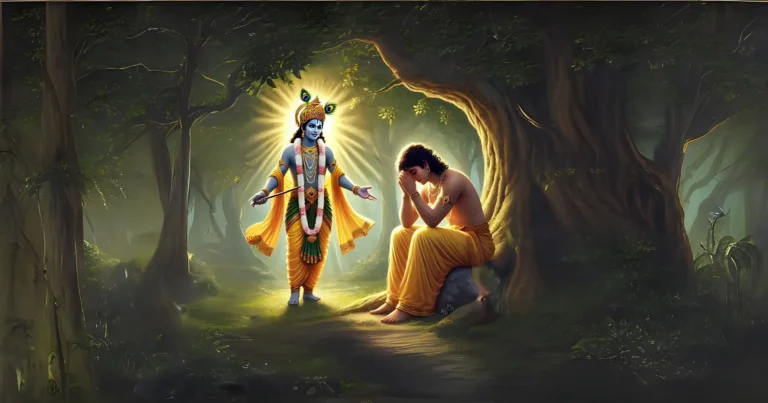Please Like the Blog and Share it for Maximum Reach
Table of Contents
History of the Ramayana
Ram Katha was first delivered by Sri Narada to Sage Valmiki in Treta Yuga when Sri Rama was installed on the throne of Ayodhya. Sri Rama slew the demon king Ravana and returned to Ayodhya with his sibling Sri Laksmana and wife Sita Devi. On returning from the fourteen years of exile, he ascended the throne and ruled for over eleven-thousand years.

It is in this period where Sri Narada, for the first time recited Ram Katha to Sage Valmiki. After he completed the recitation, Valmiki was instructed by Sri Brahma to elaborate the pastimes of Sri Rama.
Following Brahma’s orders, Sage Valmiki composed the Ramayana which is originally written in Sanskrit. He wrote 24,000 shlokas to glorify and elucidate the pastimes of Sri Rama. The central theme of this scripture, is based on the teachings of the Vedas and exalts Sri Rama as Maryada Purushottam (मर्यादा पुरुषोत्तम) or the Upholder of Dharma.

Today, we find many books by the name ‘Ramayana’, but the original edition was written by Sage Valmiki, which came also came to be the first known poem to mankind. Due to the poetic composition, Valmiki is also known as Adi Kavi.
After reading this scripture, deep realizations dawned upon Sage Veda Vyasa. In that state, he started penning His own experiences and realizations. Later these written works formed the basis of the Puranas and the greatest epic (इतिहास or Itihasa ), Mahabharata came into existence.
Glories of the Ramayana
Sage Valmiki describes Ramayana as the source of all poetry. It is the seed through which all poetic expressions come into being. If poetry exists, then it must be nothing other than the pastimes of Sri Rama.
Poems that do not glorify Sri Rama cannot be considered authentic. Because all matter has a spiritual origin. It will not go against the Scriptures, if we proclaim that Sri Ramayana is perhaps that very origin.
All works of literature should have firm alliance with Dharma. Without Dharma there can never be any work worth sharing. Works deterring from this basic principle is to be considered as an output of Maya, the great Delusionary potency of Bhagawan Sri Rama.
Therefore, Sri Hanumanji says that the source of Dharma is Sri Rama. The solid foundation of the enormous tree of Sanatana Dharma rests on the name(Nama) of Sri Rama.
Sri Rama is the Favorite Subject of the Ancient Poets.
Now the question arises as to why all poets like sage Valmiki, Kavi Kalidas, Goswami Tulsidas and others chose Sri Rama as their central character?
Why do all poems in Sanatana Dharma focus on the life of Sri Rama? A learned scholar answered this question by sharing the glories of Sri Rama. He says that the poets are not at fault for choosing Sri Rama as their protagonist.
If someone is at fault it is Sri Rama alone. His divinity, personality and charisma enamors all living beings and compels them to dedicate their piece of work to His glorification. When writing poems on ordinary people, we are encountered by severe limitations. We simply cannot exaggerate the qualities of the protagonist as the reality invites room for friction and lies in the abit of pure fiction.
But, when we write about the Lord, we enter a timeless realm where there is no room for fakery and exaggeration. There is abundance in His character that great poets fall short of words to even merely describe Him.
They keep composing poems, expecting that atleast this time they should be able to describe the Lord effectively. Sri Rama’s qualities are such that no mortal is capable of possessing even a speck of it.
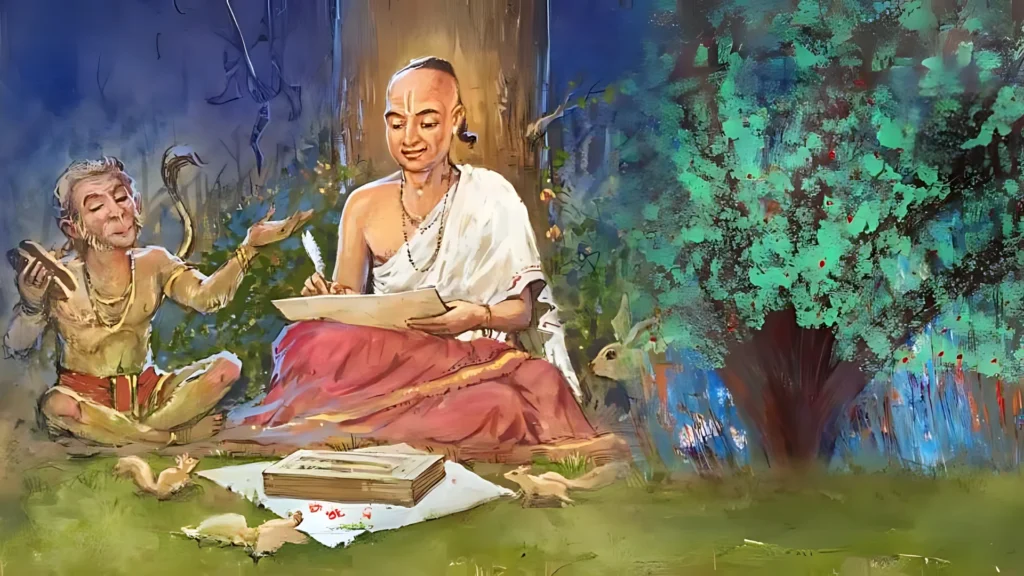
This is the only reason why all poets of Sanatana Dharma chose Sri Rama as their protagonist. One such great poet and devotee of Sri Rama appeared about 510 years ago was Goswami Tulsidas, whos epic work called the Sri Ramcharitmanas is revered even today.
The Ramcharitmanas is the crest-jewel of Bhakti and Sharanagati. Lets sing the Glories of Sri Ramcharitmanas.
Glories of Ramacharitmanas
It is Sage Valmiki of Treta yuga who appeared as Goswami Tulsi das in Kali Yuga. In Treta, Ramayana was written while in Kali Yug, Tulsidas Goswami composed Sri Ramacharitmanasa. The title of this composition is a subject worth introspecting.
A scholar decoded the meaning of Sri Ram-charit-Manas by diving it into three segments. The first word is Sri Rama who is the Supreme Being while the last word is Manas which refers to the living entities (or jiva).
In the current times, our daily routine is choked with worldly activities that we rarely find time to think about the Lord. We are far-away from God-realization in that manner. But, through Ramacharitmanas, we find the simplest way to connect with Sri Rama.
The word charit in the title of Goswami Tulsidas’s work paves our way to God-realization. The scholar adds that living entities should bridge the gap between themselves and Sri Rama by contemplating on His pastimes, character and form as described in the Ramacharitmanas.
7/8 Questions from Sanatana Dharma
The scores generated in this Quiz may or may not be absolute. There may be right or wrong answers to each Question. A percentage towards 100 indicates that you are more aligned to the overall subject matter.
Interpretations of the Title-Ramacharitmanas
The word Manas has another interpretation as explained by Sage Valmiki. He says that Manas refers to Manas Sarovar which originated from the heart of Lord Brahma. Manas Sarovar translates as River of the Heart.
Manas means heart of Lord Brahma while Sarovar refers to the emotions that arose in the heart of Lord Brahma while contemplating on Sri Rama. Further, Valmiki says, from this very Manas Sarovar, the river Sarayu came into existence. This river has great significance as it emerged from the eyes of Sri Rama.
Story of Sarayu River
When Sri Rama appeared in front of Brahma, tears of love started flowing through His eyes. He was deeply touched by the sincerity of purpose and dedication as he saw Sri Brahma meditate on His form.
The Lord manifested enormous compassion which came rolled down as tears from His lotus eyes. Sri Brahma extended his Kamadalu (sacred water pot) and assembled Sri Rama’s tears in the lake of His heart (or Manas Sarovar).
So, Manasarovar is the pure, undiluted love for God which a devotee like Lord Brahma possess while the gift in return that Sri Rama grants to his devotees is Sarayu. These rivers symbolise communion between the Lord and his dear devotees. Sri Rama says,: “If devotees bathe in Manas Sarovar, Sarayu even once, they’ll attain My companionship”.
Hearing this, Lord Shiva is deeply concerned for the beings of Kali Yuga as He realizes that circumstances may not always favor devotees. Today, in the age of kali, travelling to Manas Sarovar, Sarayu is not possible for many people for many reasons. But, Lord Shiva encapsulates all the benefits of bathing in the sacred rivers in His Manas, which was later revealed by Goswami Tulsidas.
Revelation of Manas
A Siddha (enlightened being) says that Ramacharitmanas was not composed by Goswami Tulsidas. Instead it was originally narrated by Lord Shiva to Devi Parvati. The divine Katha was later, in Kali Yuga revealed by Tulsidasa. Lord Shiva hails Ramacharitmanas as the heart of Lord Rama. The pastimes of the Lord are non-different from Him. The undiluted love of Sri Rama for his dear devotees is present in Manas.
“If you want to experience the love of God, you need not travel to Sarayu but instead you must read the Ramacharitmanas.”, says Lord Shiva. This is the glorious position of The Ramacharitmanas.
Goswami Tulsi Dasa writes: नौमी भौम बार मधुमासा। अवधपुरीं यह चरित प्रकासा॥
Goswami Tulsi Das writes: On the 9th of march/April (Navami Tithi, Chaitra Maas), on Tuesday (Mangalvaar), the Ramacharitmanas was revealed in Ayodhya. The significance of this esoteric statement tells us that Goswami Tulsidas was granted the vision of the Manas, which was originally delivered by Lord Shankara to Devi Parvati.
Goswamiji disowns himself as the author of the Ramacharitmanas. He addresses himself as a mere tool to reveal this divine knowledge and does not entitle himself as the writer of the Manas.
We must take note that the revelation of Ramacharitmanas took place on the same date, day, place and time, as the appearance of Sri Rama. This is not a coincidence but a divine arrangement made by the Lord. It Sri Rama Himself who descended on earth, in the age of Kali, in the form of the Ramacharitmanas.
This is His exclusive grace alone that has made Him so easily available to us, owing to our material contamination. The Lord’s name, form, pastimes and abode are non-different. So, reading the pastimes and description of the Lord as written in the Ramacharitmanas is the best means to connect with Him. It is Lord Shiva’s concern for the living entities of Kali Yuga that has made such an austerious pursuit so simple and applicable.
The principles of Vairagya, Satya, Jnana, Bhakti and Karma form the very basis for the Ramcharitmanas. A conversation on Detachment or Vairagya, between Sri Laxmana, the very shadow of Bhagawan and his dear brother, and Nishada Raja, the Tribal King and friend of Sri Rama is an interesting subject of study.
Lord Lakshmana highlights the importance of detachment to Nishadraj
मोह निसाँ सबु सोबनिहारा |
देखिअ सपन अनेक प्रकारा ||
एहिं जग जामिनि जागहिं जोगी |
परमारथी प्रपंच बियोगी ||
जानिअ तबहिं जीव जग जागा |
जब सब बिषय बिलास बिरागा ||
dekhia sapana aneka prakārā ||
ehiṃ jaga jāmini jāgahiṃ jogī |
paramārathī prapaṃca biyogī ||
jānia tabahiṃ jīva jaga jāgā |
jaba saba biṣaya bilāsa birāgā ||
Detachment is an invaluable asset. In times of need, it is essential to know the impermanent nature of the world. Death is an inevitable part of life. In one’s last moments, only the act of renunciation can save one from sorrow.
However, speaking of renunciation all the time can be inappropriate. We must know when to speak of renunciation looking at the time, place and circumstance. Though the body is perishable, if a patient seeks medical help from a doctor, the doctor mustn’t disappoint him.
If the doctor gives him a discourse on the destructible nature of the body, the patient will end up getting frustrated. He will wonder where on earth I have come to. Which means it is not always right to keep repeating the impermanent nature of the world.
Once, a friend of my mine invited a singer for his house inauguration ceremony. The singer sang the following lines-
अरे मन यह दो दिन का मेला रहेगा |
न कायम ये जग का झमेला रहेगा ||
are mana yaha do dina kā melā rahegā |
na kāyama ye jaga kā jhamelā rahegā ||
“Oh, mind this is just a 2-days’ fair. This jugglery of the world shall very soon end.”
The host got frustrated and said- “It would be best if you stop your singing. Did we call you, for us to hear this?”
This means that when we need to escape sorrow, a talk on renunciation can do wonders. But, when we interact with friends and family, we should act as per the situation. When we interact with people we must know how to switch our mood. If we keep trying to bring the supreme principle in irrelevant situations, we will end up in problems.
Renouncing the world doesn’t just mean talking about renunciation. After a long-day’s work you have a good night’s sleep in your cozy room. This is also renouncing the world in a way. You give your mind some rest and stop thinking for a few hours. You disengage from the world.
When a person feels very tired and exhausted, if he enters his world of emotions and exchanges love with Bhagavan, he derives immense bliss and satisfaction which cannot be found elsewhere.
Goswmiji’s all-accepting nature
Tulsidas Gowami never stressed on a particular path. He held all paths at the same-pedestal. Just saying that ‘My path is the best and all other paths are futile’ is nothing but an eruption of opinions. Life is so vast, it cannot be contained in one person’s viewpoint. This is not the correct way to approach the all-expansive nature of life. Not being rigid about a specific path is definitely the outcome of Viveka or discrimination-
बुद्धेः फलमनाग्रहः | buddheḥ phalamanāgrahaḥ |
“Shri Ramacharitmanas” is a scripture that doesn’t stress on any particular path. Due to Tulsidasji’s mature understanding into the nature of spirituality, he didn’t demean any path, He respected all paths.
झूठ कोउ नाहीं |jhūṭha kou nāhīṃ |
None of the paths are wrong.
Goswamiji had described Karma, Jnana and Bhakti yoga. He writes in the Vinaya Patrika-
प्रीती प्रतीति जहाँ जाकी, तहँ ताको काज सरो |
मेरे तो माय-बाप दोउ आखर, हौं सिसु-अरनि, अरो ||
मोहि तो ‘सावन के अंधहिं’ ज्यों सूझत रंग हरो ||
prītī pratīti jahā jākī, taha tāko kāja saro |
mere to māya-bāpa dou ākhara, hauṃ sisu-arani, aro ||
mohi to ‘sāvana ke aṃdhahiṃ’ jyoṃ sūjhata raṃga haro ||
“Just as one is blinded by greenery in the monsoon rains, I see no differentiation in any path towards god-realization.”
Yet one needs to accept a path for oneself. If there is a disease, you need a cure for it. One needs to accept a certain path of one’s liking.
Tulsidas Goswami’s Favorite Path
Goswamiji says in his Vinay Patrika-
बहु मत मुनि बहु पन्थ पुराननि, जहाँ-तहाँ झगरो सो|
गुरु कह्यो राम-भजन नीको मोहिं लगत राज-डगरो सो ||
bahu mata muni bahu pantha purānani, jahā-tahā jhagaro so|
guru kahyo rāma-bhajana nīko mohiṃ lagata rāja-ḍagaro so ||
As far as my personal liking is concerned, Ram Nama is everything for me. Goswamiji was well- acclaimed and loved by the people. He had gained immense popularity amongst the masses.
So many people often asked him “Goswamji, what is the secret behind your Siddhi? Which secret mantra do you chant? Goswamiji quickly said-
संकर साखी जो राखी कहौं, कुछ तौ जरि जीह गरो |
saṃkara sākhī jo rākhī kahauṃ, kucha tau jari jīha garo |
I take Lord Shiva’s oath and say-
अपनो भलो राम नामहि ते तुलसिहि समुझि परो ||
apano bhalo rāma nāmahi te tulasihi samujhi paro ||
“Whatever success I have gained in my life, is all due to the power of Rama Naam.” These lines are stated in the Vinaya Patrika.
Though countless sadhana practices are prescribed in different scriptures, Goswamiji personally attained blessedness only through the chanting of Rama Nama, Truly, he is partial towards Rama Nama. This proves that one can be partial even while being non-partial in one’s approach to Bhagawan. Although Goswami Tulsidas accepts whole-heartedly that all valid ways take you to Bhagawan, he himself only depends on Rama Nama.
Kakabhusundiji’s liking for Bhakti
Garudji asked Kakabhusundiji—
ग्यानहि भगतिहि अंतर केता |
gyānahi bhagatihi aṃtara ketā |
“What is the difference between Jnana and Bhakti?”
Bhusundiji in turn replied-
भगतिहि ग्यानहि नहिं कछु भेदा |
bhagatihi gyānahi nahiṃ kachu bhedā |
“There is no difference between Bhakti and Jnana.”
But, here he has shown his partiality for Bhakti while speaking.
When Garudji spoke, he first said Jnana and then Bhakti, but when Bhusundiji replied- he said- Bhakti first and then Jnana. This means that having partiality for one’s spiritual discipline is a good sign- भगति पच्छ हठ नहिं सठताई | bhagati paccha haṭha nahiṃ saṭhatāī |
You may also want to read- Goswami Tulsidas explains the world of Bhakti
How is Goswamiji Partial towards Ram Nama?
There are four main paths towards god-realization- They are Nam, Roop, Leela and Dhama. Bhagavan’s Name, form, pastimes and abode.
Before starting the Ramcharitmanas, Goswmaiji gave the description of the Dham–
बंदउँ अवध पूरि अति पावनि |
सरजू सरि कलि कलुष नसावनि ||
प्रनवउँ पुर नर नारि बहोरी |
ममता जिन्ह पर प्रभुहि न थोरी ||
baṃdau avadha pūri ati pāvani |
sarajū sari kali kaluṣa nasāvani ||
pranavau pura nara nāri bahorī |
mamatā jinha para prabhuhi na thorī ||
He has thus very beautifully described the Dham. Then, there is also a description of Bhagavan’s form and beauty. He says, I bow down humbly to the Pure land of Avadh Puri (Ayodhyaji). This is where the river Sarayu flows, whose pristine glory and purity is unparalleled. He reveals that the pure residents of this divine land overflow with the love of Godhead.
The Above statement is to be seen in the context of one’s Bhava or internal mood towards Bhagawan and His eternal associates who once lived in Ayodhya, when the event of Ramayana took place once in Treta Yuga. One should not be blinded by believing that the people wh live in the Dhamas or Teerthas are pure.
We should realize that it is Kaliyuga and people have fallen down their pedestals and reached an all-time low. However a Bhakta is to accept that the land of the Dham (the land where once the Lord resided during His earthly visit) is the same, the river is the same (by maintaining reverence in the heart, of its spiritual purity but may discount its physical purity, due to industrialization, and the falling standards of personal hygiene of people polluting the once pristine rivers)
पुनि मन बचन कर्म रघुनायक |
चरन कमल बंदउँ सब लायक ||
राजिव नयन धरें धनु सायक |
भगत विपदि भंजन सुखदायक ||
puni mana bacana karma raghunāyaka |
carana kamala baṃdau saba lāyaka ||
rājiva nayana dhareṃ dhanu sāyaka |
bhagata vipadi bhaṃjana sukhadāyaka ||
The above line describes Goswamiji surrendering his words, actions and thoughts at the Lotus feet of Bhagawan Ram. He says that the Lord with Lotus like eyes protects His devotees with His bow in hand and saves them from all types of misfortune.
And then he has taken many lines, atleast 28 lines to describe the glory of Bhagavan’s various forms and pastimes or Leela.
But when it came to describing the glory of Bhagavat Nama, his liking for Ram Nama becomes evident. He does not describe the glories of the Holy Name in just 2-4 chaupais or 28 chaupais, he took 9 entire dohas to satisfy his thirst for the name or Nama.
You find a wonderful description of the glories of the Name in the 9 dohas. The dohas reveal the secrets of the name, reading which one feels immense fulfilment. Tulsidasji has presented the name in many different angles.
Tulidas Goswami choses three personalities
In the first doha, he chose three personalities to reveal the glories of Nama. Who are they? They are Lord Shiva, Lord Ganesha and Sage Valmiki. What is the purpose behind his choice, Let us analyse.
Lord Ganesha
For Ganeshji he said-
महिमा जासु जान गणराऊ |
प्रथम पूजिअ नाम प्रभाउ ||
mahimā jāsu jāna gaṇarāū |
prathama pūjia nāma prabhāu ||
Lord Ganesha was the first to be worshipped amongst the gods, due to the power of Nama.
Lord Shiva
For Shankarji he said,
नाम प्रभाउ जान सिव नीको |
कालकूट फलु दीन्ह अमी को ||
nāma prabhāu jāna siva nīko |
kālakūṭa phalu dīnha amī ko ||
Lord Shankara is very well-aware of the glories of Nama. With the power of the name he became immune to the venom he drank during the churning of the ocean.
Sage Valmiki
And as the third name, he spoke of sage Valimiki. Or we can say he took his own name, because he is the very incarnation of Sage Valmiki-
जान आदिकबि नाम प्रतापू |
भयउ सुद्ध करि उल्टा जापू ||
jāna ādikabi nāma pratāpū |
bhayau suddha kari ulṭā jāpū ||
Adi Kavi knew the potency of the name. Though, he spelled ‘Ram’ in the reverse order, he derived immense benefits and purified his heart.
On one side we have the most intelligent and brilliant Lord Ganesha and on the other side we have Valimikiji. People believe that when Valimikiji was first advised to chant the name ‘Rama’, he could not even spell the word. “Ram”, is such a simple word. You need not even twist your tongue to pronounce it.
Goswamiji wants to point out that Ram Nama can do wonders even for the most brilliant of brilliant as well as ignorant-of-ignorant men. Nama doesn’t see any distinction. It works for men of all kinds.
The stories associated with the personalities described in this article are inspiring. They are worth analyzing. Jnanis, karmis, and Bhaktas all take refuge under the Nama .
Though people surrender to the name, they have different moods towards it. For instance- When a jnani takes the name, he takes it with a different mood.
A bhakta differs from a jnani in his mood. A surrendered soul sees the name with a different mood. The same name has different meanings for different people.
Please Like the Blog and Share it for Maximum Reach

